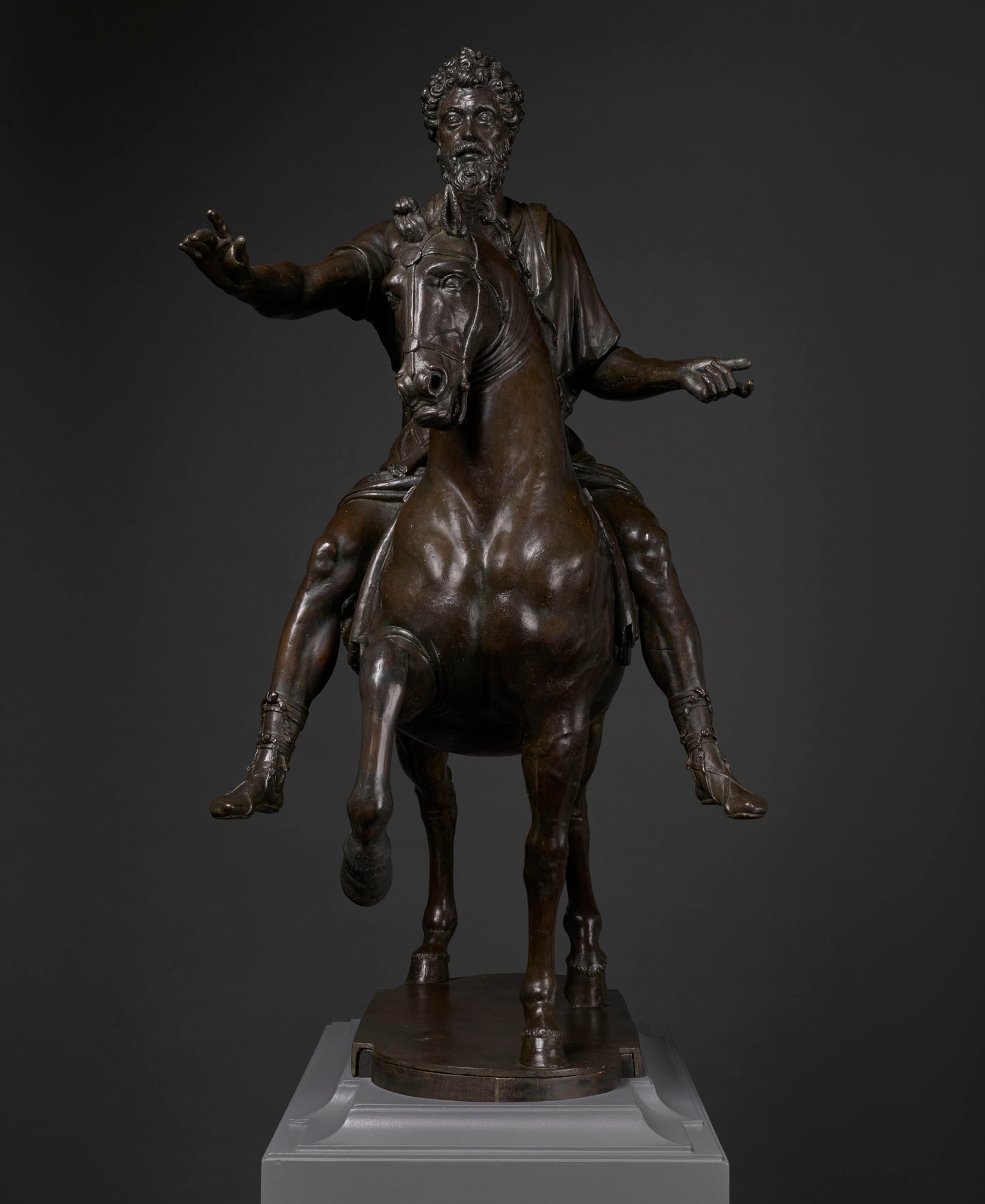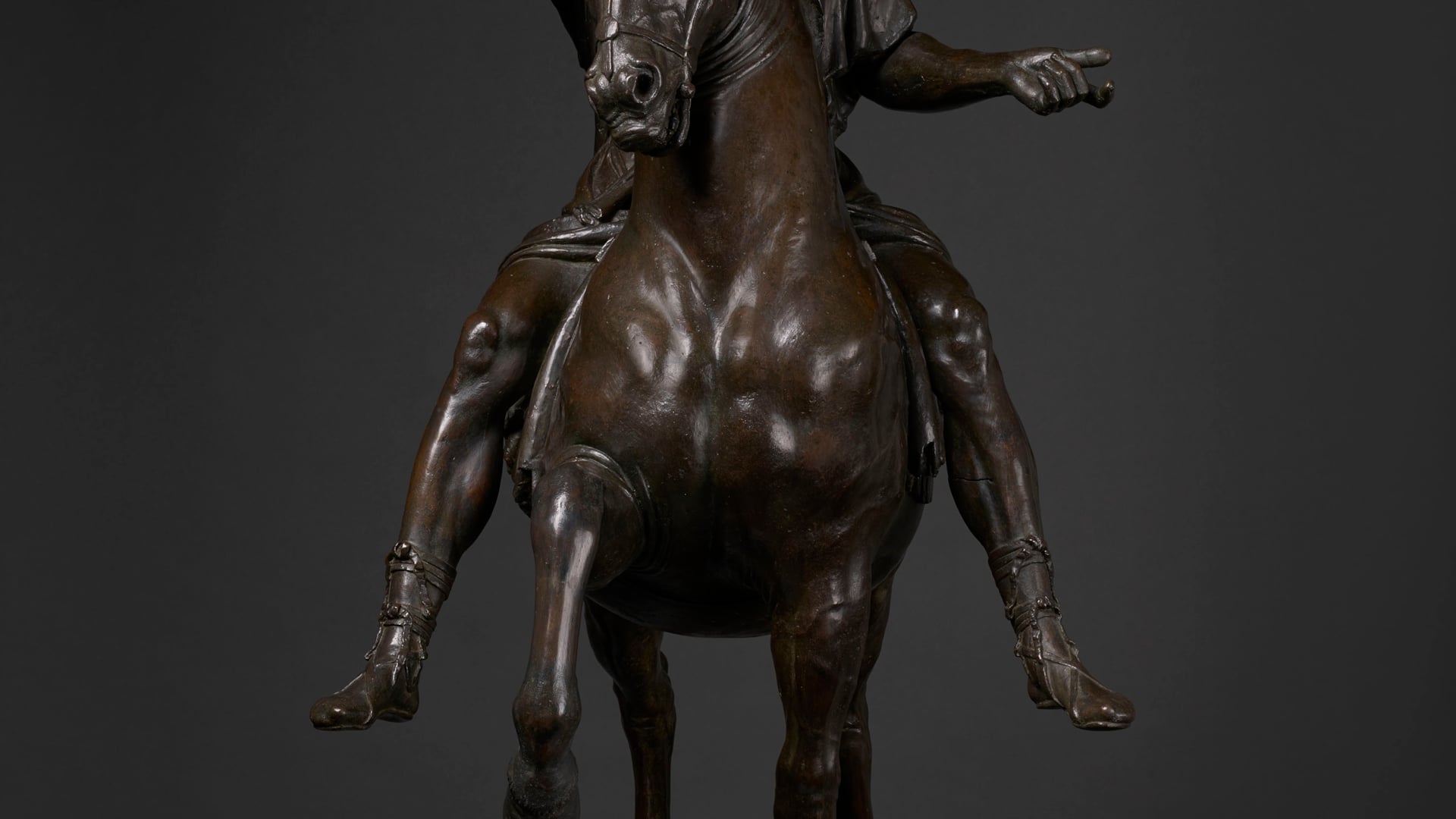

Provenance:
Marchesi Spinola di Luigi, Genoa
Prince Trivulzio, Milan
Heim Gallery, London
Arthur M. Sackler collection, New York
Musee d’Art Classique de Mougins, Mougin
Marchesi Spinola di Luigi, Genoa
Prince Trivulzio, Milan
Heim Gallery, London
Arthur M. Sackler collection, New York
Musee d’Art Classique de Mougins, Mougin
Exhibited:
Venice, Fondazione Prada, Portable Classic: The Greek Canon and its Mutations, 9 May- 13 September 2015, exh. cat., p. 244., no. 60, illus. p. 373.
Venice, Fondazione Prada, Portable Classic: The Greek Canon and its Mutations, 9 May- 13 September 2015, exh. cat., p. 244., no. 60, illus. p. 373.
Literature:
S. Varni, Ricordi di alcuni fonditori in bronzo, Genoa, 1879, p. 48
J. Montagu, Gold, Silver and Bronze. Metal sculpture of the Roman Baroque, New Haven and London, 1996, p. 6, fig. 9
S. Varni, Ricordi di alcuni fonditori in bronzo, Genoa, 1879, p. 48
J. Montagu, Gold, Silver and Bronze. Metal sculpture of the Roman Baroque, New Haven and London, 1996, p. 6, fig. 9
This striking equestrian group, signed by Orazio Albrizzi, has helped identify a corpus of works by the artist. Its distinctive style and facture, in particular the finely detailed modelling, the competent cast and the patina which simulates the colour of an ancient bronze, is reminiscent of a small number of very fine and apparently unique reductions of classical sculptures which have now been identified as the work of Albrizzi. No further versions of the present bronze are known.
The sculptor was first recorded as a caster for Mochi's famous equestrian monuments of the Farnese in Piacenza (1612-1619) and in the 1620s he was contracted in Rome for Bernini's Baldacchino and Cathedra. Albrizzi was identified as the author of reductions of antique sculptures after the rediscovery of the present bronze in the collection of Prince Trivulzio in Milan[1]. Santo Varni wrote in 1879 (see lit.): “E presso i marchesi fratelli Spinola di Luigi serbavansi quattro statue d’Orazio Albrizio romano, dell’altezza di circa 75 centimetri, rappresentanti l’Ercole Farnese, il Centauro della Villa Borghese, il Marco Aurelio del Campidoglio, ed una copia del Nettuno di Gian Bologna pel giardino de’ Medici.” Varni also included the following footnote (n. 3): “Anche questi lavori spettano all’anno 1624, il quale vi si legge inciso col nome dell’autore.” This last sentence is very useful since the date cannot be deciphered on the bronze inscription anymore.
The antique bronze statue of Marcus Aurelius was placed in front of the Lateran Palace, Rome before being taken to the Piazza del Campidoglio in the 16th century. Much admired, it attracted a number of legends (it was thought for a time to represent the emperor Constantine). It was copied for the first time by Filarete who realised a bronze statuette (now in Dresden) for Piero de Medici in 1465.
The present bronze was included in the seminal Portable Classic, show at the Fondazione Prada in Venice in 2015 curated by Anna Anguissola and Salvatore Settis which explored the relationship between Roman and Greek art.
[1] Then with the Heim Gallery, London, see catalogue of Summer Exhibition, 1982, no. 16 (ill.).
The sculptor was first recorded as a caster for Mochi's famous equestrian monuments of the Farnese in Piacenza (1612-1619) and in the 1620s he was contracted in Rome for Bernini's Baldacchino and Cathedra. Albrizzi was identified as the author of reductions of antique sculptures after the rediscovery of the present bronze in the collection of Prince Trivulzio in Milan[1]. Santo Varni wrote in 1879 (see lit.): “E presso i marchesi fratelli Spinola di Luigi serbavansi quattro statue d’Orazio Albrizio romano, dell’altezza di circa 75 centimetri, rappresentanti l’Ercole Farnese, il Centauro della Villa Borghese, il Marco Aurelio del Campidoglio, ed una copia del Nettuno di Gian Bologna pel giardino de’ Medici.” Varni also included the following footnote (n. 3): “Anche questi lavori spettano all’anno 1624, il quale vi si legge inciso col nome dell’autore.” This last sentence is very useful since the date cannot be deciphered on the bronze inscription anymore.
The antique bronze statue of Marcus Aurelius was placed in front of the Lateran Palace, Rome before being taken to the Piazza del Campidoglio in the 16th century. Much admired, it attracted a number of legends (it was thought for a time to represent the emperor Constantine). It was copied for the first time by Filarete who realised a bronze statuette (now in Dresden) for Piero de Medici in 1465.
The present bronze was included in the seminal Portable Classic, show at the Fondazione Prada in Venice in 2015 curated by Anna Anguissola and Salvatore Settis which explored the relationship between Roman and Greek art.
[1] Then with the Heim Gallery, London, see catalogue of Summer Exhibition, 1982, no. 16 (ill.).